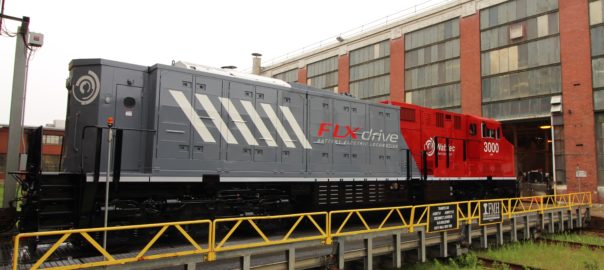Vale has announced a partnership with Wabtec Corporation to advance the decarbonisation of the company’s rail operations. The deal includes an order for three of Wabtec’s FLXdrive battery locomotives and a collaboration to test ammonia as a potential clean, alternative fuel to replace diesel.
The three 100% battery-powered FLXdrive locomotives will be used on the Carajás Railroad (EFC), which runs the world’s largest iron ore train consisting of 330 railcars transporting 45,000 t.
Today, three to four diesel locomotives pull the train. Once delivered, the FLXdrives will join the diesel locomotives to form Brazil’s first hybrid consist pulling the train uphill for 140 km in Açailândia, in the state of Maranhão, where fuel consumption is the highest. The FLXdrives will replace the two diesel locomotives, known as “dynamic helpers”, that are used to pull the train uphill today, Vale says.
Wabtec will build the FLXdrive locomotives at its plant in Contagem (state of Minas Gerais). The locomotives’ delivery is forecast for 2026.
Vale’s Director of Energy, Ludmila Nascimento, said: “Initially, we are maximising energy efficiency, replacing the diesel locomotives in the dynamic helper with battery ones, but the idea is that, in the future, the other locomotives on the train can be fueled by ammonia. This way, we would have a clean operation at EFC. This agreement is the first of many that we are seeking in order to accelerate the decarbonization of our railway operation.”
Vale and Wabtec will work together on a study to use ammonia as a clean alternative fuel, which does not emit CO2. The study will initially be carried out as lab tests to validate performance, emission reductions and feasibility. Among the advantages of ammonia is the fact that it allows the locomotive a longer range than other carbon-free fuels. In addition, ammonia has a high-octane rating and an established large-scale distribution infrastructure, according to Vale. The two companies will carry out the study in a laboratory over the next two years.
The FLXdrive locomotive’s energy management system recharges the batteries along the route as the train brakes.
Alexandre Silva, Manager of Vale’s Powershift Program, said: “It’s what we call regenerative energy produced by dynamic braking. Today, that energy is lost when a traditional locomotive brakes. In the downhill sections, we will be able to recharge the batteries, without having to stop the train’s operation.”
Vale introduced the Powershift Program to study alternative technologies to replace fossil fuels with clean sources in the company’s operations.
The FLXdrive locomotives are estimated to save 25 million litres of diesel per year, considering the consumption of all the railway’s trains that use the dynamic helper. These savings would reduce carbon emissions by approximately 63,000 t, the equivalent emissions of around 14,000 passenger cars per year, it says.
Danilo Miyasato, President and General Manager of Wabtec for Latin America, said: “Technological advances in battery power and alternative fuels are accelerating the decarbonisation journey for railroads. Vale’s innovative approach to adopting alternative fuels for its locomotives will benefit its customers, shareholders and communities. The FLXdrive provides Vale productivity, safety, fuel economy and emission reductions for its rail network.”
In 2020, Vale announced an investment of between $4 billion and $6 billion to reduce its direct and indirect emissions (Scope 1 and 2) by 33% by 2030. Today, Vale’s rail network represents 10% of the company’s carbon emissions. The initiative is one more step towards achieving the goal of net zero carbon emissions by 2050, in line with the ambition of the Paris Agreement to limit global warming to below 2°C by the end of the century.
The company also committed to reducing its net emissions from its value chain (Scope 3) by 15% by 2035.







